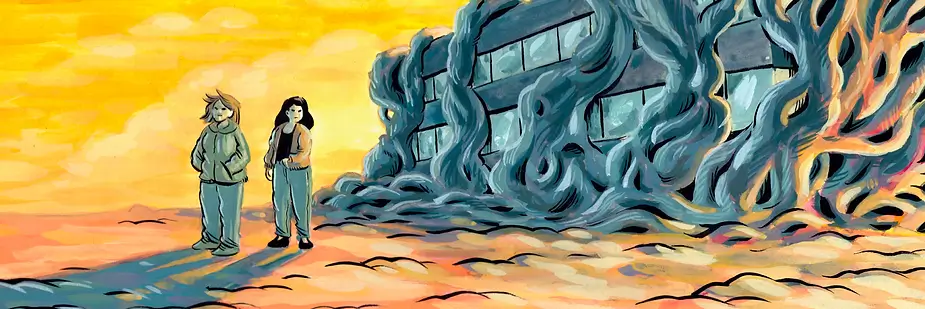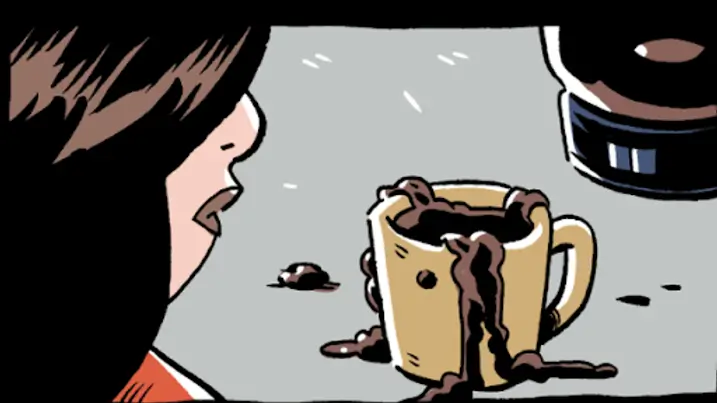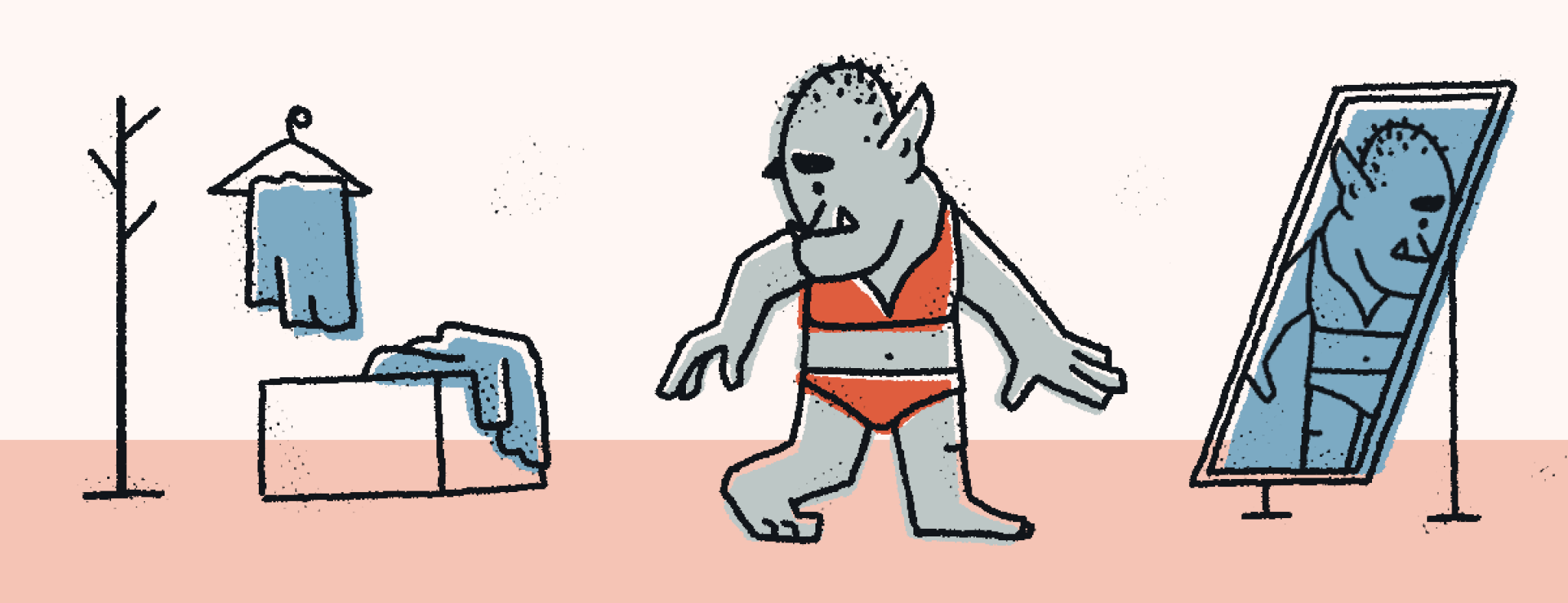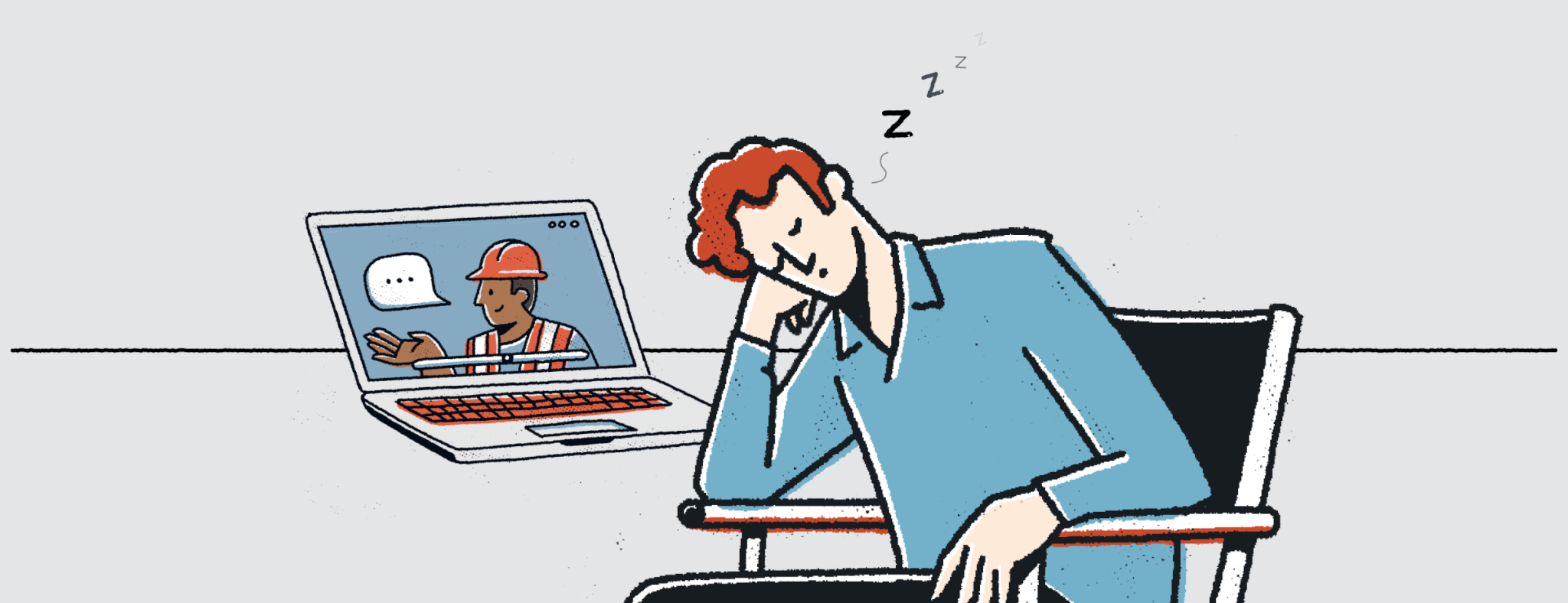A behind-the-scenes look at the creation of our Systemic Bias comic
Like learning that six golden retrievers played Air Bud or that Vigo Mortensen’s scream in The Two Towers was due to shattering his toe after kicking a helmet, this blog post is going to take you behind-the-scenes on our latest continuous learning session for Harassment Prevention: Systemic Bias in the Workplace.
The session is a full comic entitled It Grows in the Dark, and it features hand-painted art by the incomparable Christine Larsen.
It illustrates how individual moments can stack up to form harmful work environments, while asking what systemic bias looks like in our workplaces. Designed to inform and engage, the narrative implores us to find ways to pull systemic bias out from the roots.
So we’re peeling back the curtain to provide a closer look at how we make content that can compete with your favorite books, your most-watched TikToks, and your beloved, high art . . . like Air Bud.

Step 1: The Ground, Up: Content & Form
You probably wouldn’t serve a milkshake in a wine glass, and you likely wouldn’t drink Cabernet with a straw. The vessel matters. (That’s why cocktails come in all sorts of different glassware.) We approach our content with a similar methodology in mind. Since education is our top priority — what’s the most effective form this information can come in? After all, topics can be conveyed to a learner in many ways (text, audio, interpretive dance!), even if traditional training might make you believe otherwise.
To get at the heart of what systemic bias is, we knew we’d need a lot of examples. We asked, what’s the most effective way to illustrate and explain how seemingly small slights (microaggressions, the model minority complex, hiring biases) add up? Our answer? A comic!
Step 2: Setting the Foundation: Tone & Style
Systemic bias has its roots (a word that helped inspire this comic) in the systems we can take for granted — hiring, promotions, project assignments, dress codes. It’s almost spooky how embedded it is in our everyday lives (and yet how easily it goes unnoticed).
The call is coming from inside the house, and it has roots that grow in the dark. Put another way, systemic bias flourishes when we do not call it what it is . . . bias. Sounds like a horror film meets Little Shop of Horrors, to us. And thus, our creepy plant, with its roots in the company’s harmful behaviors, was born.


Step 3: Pairing up the Pieces
The story would be nothing without the right artist. Our VP of Content had been a fan (read: Twitter follower) of Christine Larsen’s work, especially her comic, Orcs!, and reached out to see if she’d be interested in teaming up. With her accessible and dynamic style, Christine was integral to elevating our story.
Subtle details, like Su-jin’s personal photos of her skydiving adventure or the gloopy, sludgy mess in the microwave, had a much stronger impact in advancing the narrative than they would have if they had been written out. Christine instinctively knew to zero in on these nuances as she drew the comic. Just as the vessel matters, so do the vessel makers.
Step 4: Building the Story
So, with a general framework and content approach in place, it came time to make this comic about something, which was my job (Hi! I’m Mallory, a playwright and screenwriter.). Writing a comic is a bit like creating a short film. When a writer cues the illustrator with an effective prompt, it’s like a director dictating what/who is in the camera’s frame. In both instances, we’re asking, what do we see?
To achieve narrative depth while not getting too bogged down in explanatory details, we decided to place the story in a setting that felt immediately recognizable. A first day at a new job. Our protagonist Su-jin is new to this office . . . just like us. She’s the lens through which we see each scene develop as we head down this journey together.
In addition to building the world around a relatable protagonist, we also wove in repeated motifs, like the plant’s roots coming up from the basement. Piece by piece, it started to come together so that by the time Christine returned the pencils (a rough sketch of the comic), we knew we’d created an effective story.

Step 5: Reinforcing Why
Unlike Air Bud, we’re not the unlikely hero of a basketball movie, but we do share a bit in common with that enthusiastic pup — we are a new way to think about achieving a goal. We’re all about better workplaces through engaging content and effective training; he was all about scoring baskets with his nose. We may not be what you expect (or have ever seen), but hey, that’s how we change the game.
When it comes to training, we know traditional methods aren’t effective, so why keep shooting those shots? This isn’t the first comic we’ve done, and by golly, it won’t be the last. We’ll keep digging up compelling, new ways to share important (and complex) topics — because just like how Air Bud went on to play football and hockey, forgettable training sounds pretty ruff.








